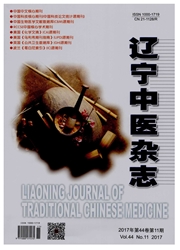

 中文摘要:
中文摘要:
目的:观察本经取穴调控偏头痛患者ATPAF2基因的差异表达。方法:20例患者随机分成经穴组和非经非穴组,每组各10例,利用基因芯片技术,获得两组的基因表达谱,通过Gene Ontology(GO)分析、Pathway分析。结果:得出ATPAF2基因在经穴组各样本中表达显著,GO分析,该基因所体现的3个功能的P值分别为0.000287、0.000287和0.000693(均P〈0.05),该基因在非经非穴组各样本中未见表达。结论:本经取穴对肝阳上亢型无先兆偏头痛的效应机制之一可能是通过对ATPAF2基因的调控实现的。
 英文摘要:
英文摘要:
Objective:Many studies support an association between migraine related proteins and meridian effect. But the asso- ciation between migraine related gene and meridian effect is uncertain. We sought to observe the regulation by Shaoyang Meridian of patients with migraine without aura (MO) ATPAF2 genes differentially expressed. Methods:20 patients were randomly divided into the meridian group and the non -acupoint and non -meridian group, 10 cases of each group. The gene chip technology was used to obtain two sets of gene expression profiles and Gene Ontology (GO) analysis and Pathway Analysis were carried out. Re- sults : ATPAF2 gene in each sample of meridian group was significant. Through GO analysis, we found an association between acu- puncture Shaoyang Meridian treated MO and the ATPAF2 gene (P = 0. 000287 〈 0.05, P = 0. 000287 〈 0. 05, P = 0. 000693 〈 0. 05 ). The gene expression was not in each sample of the non - acupoint and non - meridian group. Conclusion: In the process of Shaoyang Meridian acupuncture treating MO, ATP synthase plays an important role. The data suggests Shaoyang Meridian acu- puncture in the treatment of hyperactivity of liver Yang type of migraine has good effect and the mechanism may be based on the realization of ATPAF2 gene regulation. And regulating the activity of ATP synthase becomes the new target treatment of MO.
 同期刊论文项目
同期刊论文项目
 同项目期刊论文
同项目期刊论文
 期刊信息
期刊信息
